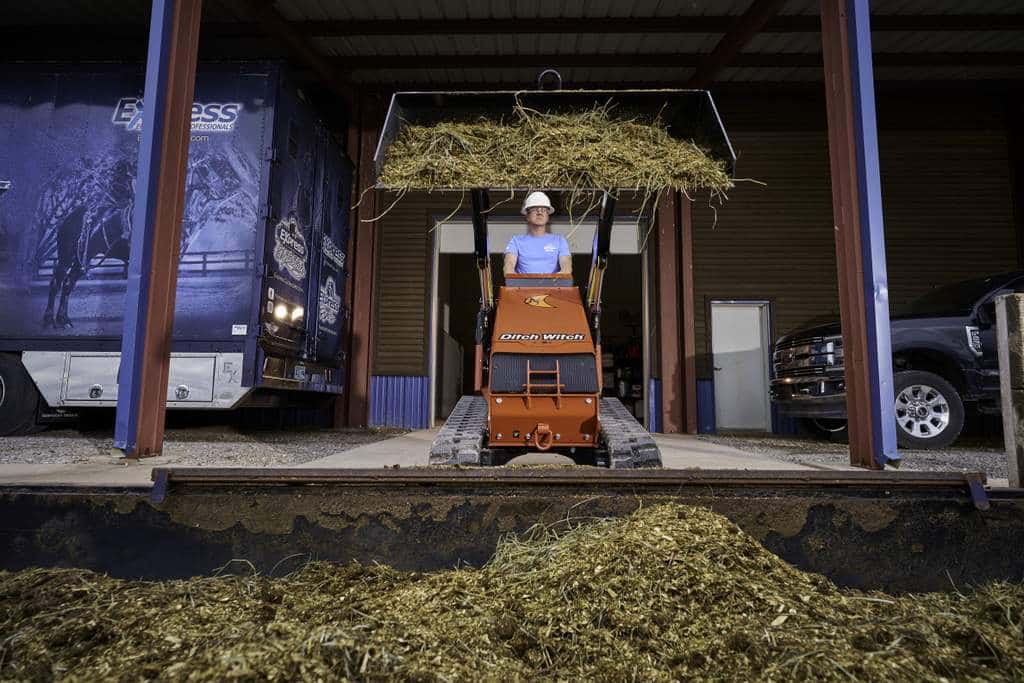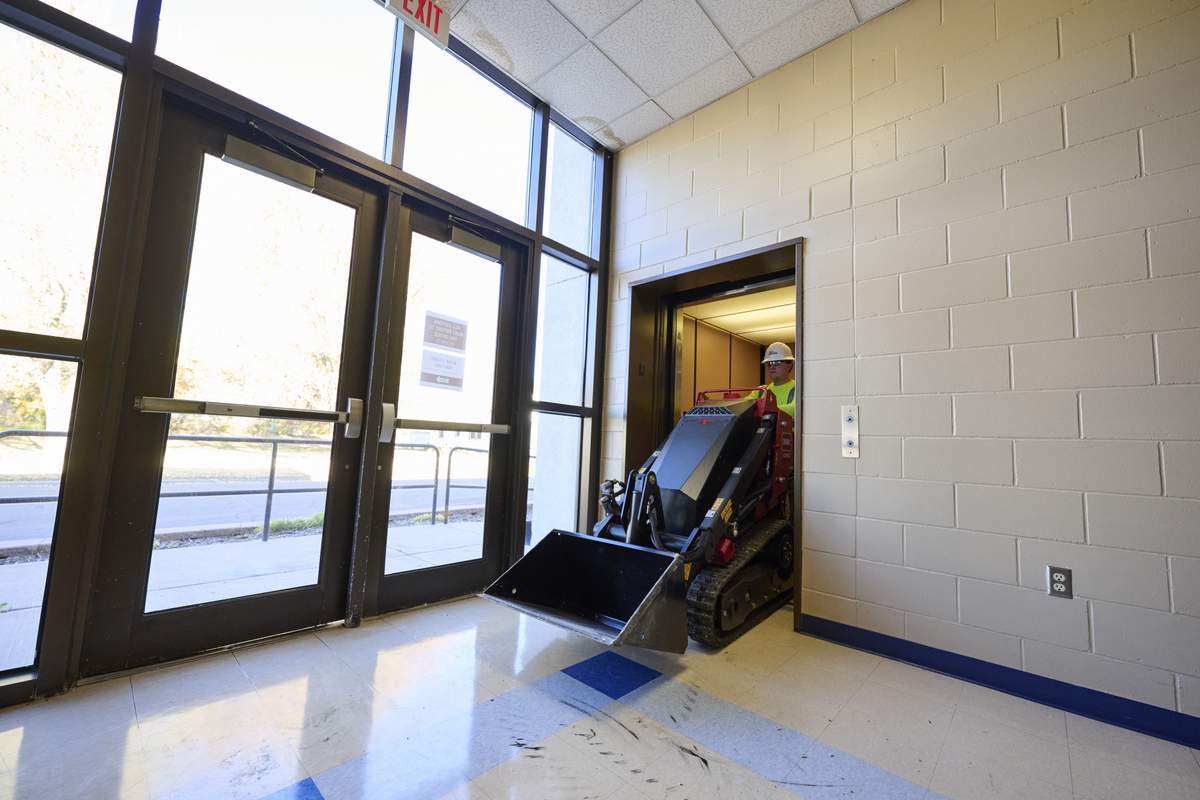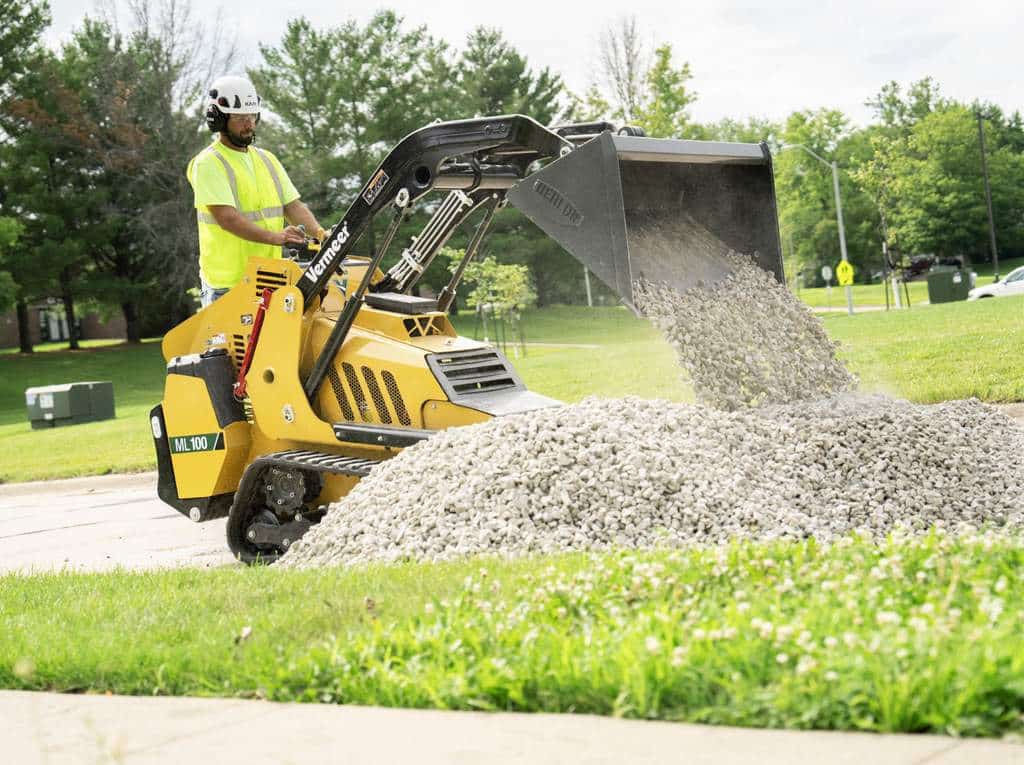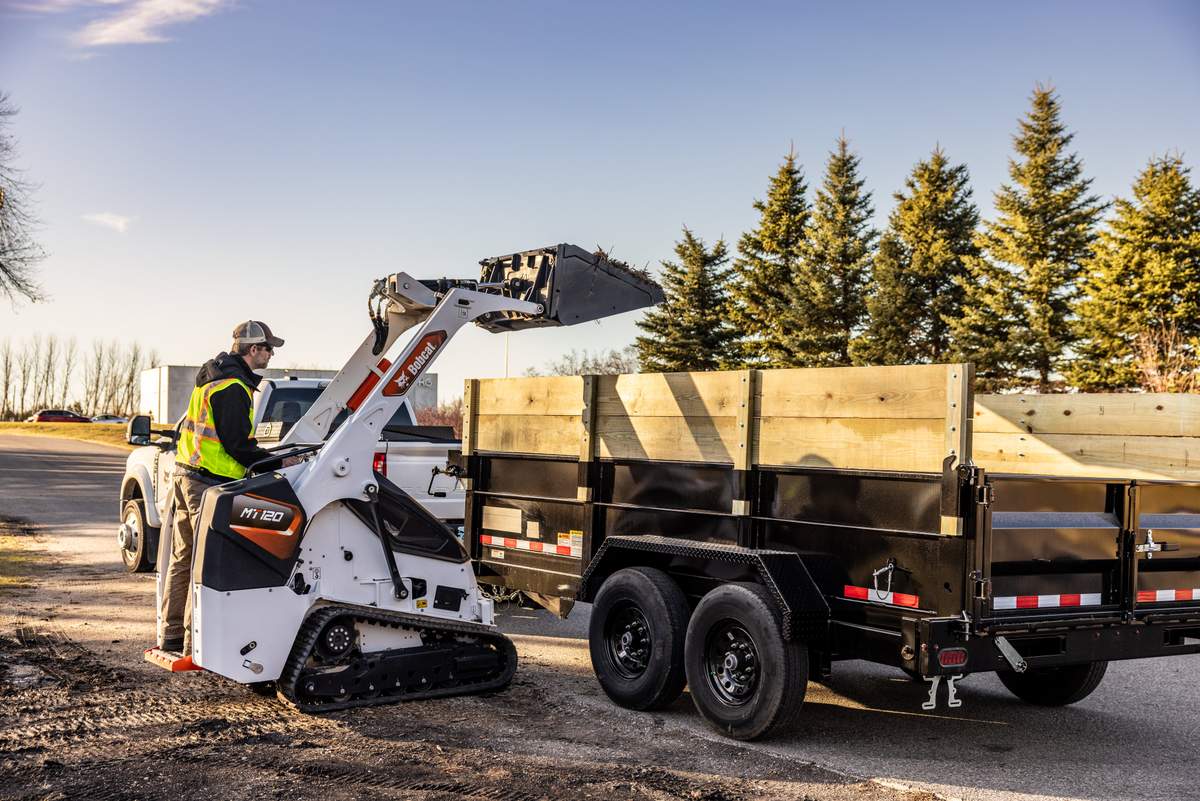Simplify Fence Installation with a Walk-Behind or Ride-On Compact Tool Carrier

Traditionally, fencing contractors rely on a variety of hand-held tools to get the job done. While effective, installing a fence with hand-helds can be slow, hard on the body and even inefficient. Contractors are now putting away hand-held augers and posthole diggers and replacing them with versatile and easy-to-use compact utility loaders (a.k.a. compact tool carriers, mini skid steers, etc., depending on the manufacturer). Featuring simple controls and a wide variety of attachment capabilities, the compact utility loader (CUL) is ideal for fencing applications, including material hauling, post hole digging, footing installation and landscaping. Upfitting a CUL for fencing installations is making it possible for one person to accomplish what was previously a two- or three-person operation.
Tracks or Tires
Tracked and wheeled loaders are compact machines that provide full ground engagement in all conditions for optimal digging power yet deliver a light footprint that minimizes damage to existing surfaces. Most units offer a simple joystick that controls all attachment movements, making these loaders easy to operate for first-time and experienced users. Because of their zero-radius turning ability and narrow widths, CULs can easily maneuver into the smallest backyards and through gate or fence openings.
While all types of CUL units will prove effective in fencing applications, some contractors prefer wheeled units instead of tracks because they are often a less expensive option, offer better visibility to the attachment (for example, an auger for drilling holes) and don’t require the extra flotation provided by tracked machines. Tracked units distribute the weight of the machine better, leaving less of a footprint, which means a contractor can work in a wider range of ground conditions.
Power

Since most of the work being accomplished is digging holes for the fence post, hydraulic performance is extra important. Keep in mind that you’ll rarely be performing one function at a time. At any given moment, the hydraulic system is being used to perform multiple actions. For example, when you drill a fence post you’re both tilting, lifting and pushing. To ensure the compact utility loader can provide power to the hydraulic components precisely when it’s needed, choose a manufacturer known for superior hydraulics. Also consider how easy it is to switch out hydraulic attachments on the CUL. Some manufacturers have incorporated easier touchpoints that make swapping out attachments a breeze.
Sizing Things Up
Your jobsite perimeter and any potential obstacles should always be top of mind when selecting a compact utility loader for fencing installation. Will you have to navigate through narrow openings? Is the fence being installed close to a building? What other projects may be occurring simultaneously on the jobsite that you’ll need to navigate around? While smaller CULs — typically classified as “mini” — will often be the right fit for a fencing installation, talk to your dealer or rental house to ensure you’re selecting the right size for the job at hand.
Fencing Installation Attachments
To outfit a compact utility loader for fencing work, a contractor needs to look at what attachments can reduce the amount of hand labor being performed. CULs offer a wide range of attachment capabilities that enable users to tackle the toughest fencing tasks, such as digging in challenging soil conditions, excavating and grading in confined areas, hauling supplies, mixing and pouring concrete and breaking up old materials. Popular attachments for fencing installation may include a high torque-auger power head, backhoe, cement bowl, adjustable forks, hydraulic breaker and leveler attachment.
A high-torque auger power head attachment provides users with a fast and simple alternative to traditional manual hole-digging methods. Boasting powerful torque, an auger power head is designed to dig large-diameter holes in rough or rocky soil. Augers can be used with bits ranging in diameter from 6 to 30 in. and can create hole depths as great as 7 ft.
A universal swivel auger power head ensures plumb holes on uneven terrain — ideal for installing fences. Toro’s universal swivel auger is powered by 960 lbs of torque and 86 rpm. The auger can be used with bits ranging from 6 to 24 in. and can reach depths of up to 7 ft as well.
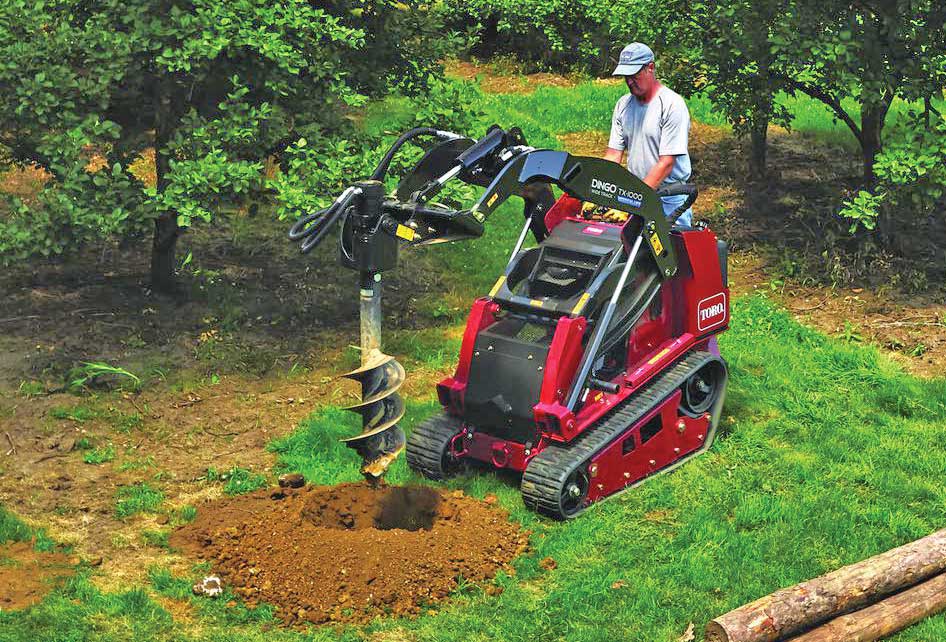
The backhoe attachment is ideal for a variety of applications including digging, loading, trenching, backfilling and demolishing. A backhoe will typically come standard with a 13-in. wide bucket and will feature a maximum digging depth somewhere around 82 in. with a 78-in., 2-ft, flat-bottom digging depth. These attachments often offer at least a 70-in. loading height and 113-in. loading reach from the swing pivot.
A cement bowl attachment allows contractors to easily haul, mix and pour dry cement. Look for a compact utility loader with a small footprint and a compact cement bowl to enable an operator to pour footings without disturbing existing landscape, allowing access to areas previously accessible only by hand labor.
Adjustable forks can be used for a variety of material handling jobs — to move posts, rocks, trees, pallets, tools and more around the jobsite. It’s like having a roving workstation to transport heavy materials without fatigue. Adjustable forks can even assist in the construction of retaining walls by transporting concrete blocks. They typically have a lift capacity of 300 lbs and a maximum lift height around 60 in.
The hydraulic breaker attachment simplifies the tough job of breaking concrete, asphalt, rock or brick. Ideal for breaking up footings, sidewalks, foundations and other solid structures, the breaker features a multi-position mounting head, allowing users to easily break materials in both horizontal and vertical positions.
The leveler attachment allows contractors to easily grade, finish and spread topsoil and other landscape materials. It’s ideal for prepping or finishing surfaces during patio and deck installations, as well as filling post holes. The leveler can even double as a material handler, transporting much-needed supplies such as plants, fencing material and posts.
Fencing contractors will find compact utility loaders invaluable from start to finish. In addition to the versatility they provide, the attachments are easy to change out. When selecting a unit, look for systems that allow any of the attachments to be added or removed with a few simple lock pins and, for hydraulic attachments, easily connected by a couple hydraulic lines.
As with all compact utility loaders, maneuverability, visibility and simple controls are all key differentiators when compared with skid steer loaders, so contractors should look to right-size their equipment to the task at hand. Beyond that, operators should make sure to select a unit they will feel comfortable working on all day. Finally, the ability to get on and off the machine quickly and easily is also important, specifically with fencing applications. For budget-savvy contractors looking for a highly productive equipment solution on their next project, the compact utility loader delivers in spades.
Kyle Cartwright is a marketing manager for Toro.
I hate to be the bearer of bad news, but sometimes you can’t have it all… unless you rent. From finding the right dealer to scoring the perfect rental machine, we have you covered!

